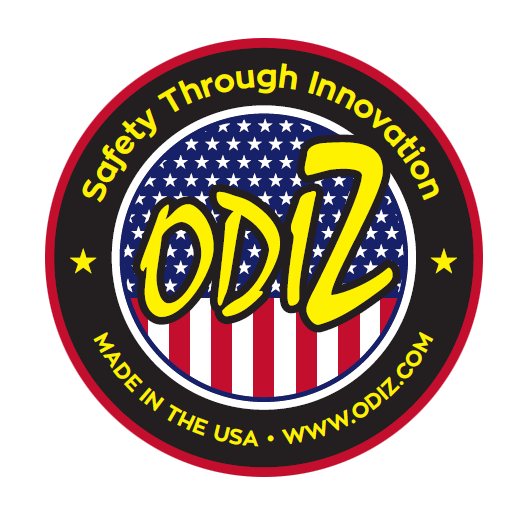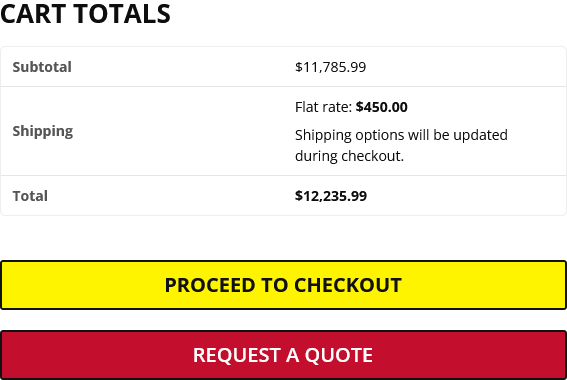OSHA Fire Extinguisher Inspections
Professional fire extinguisher inspections and portable fire safety services. Ensure your extinguishers meet 29 CFR 1910.157 & NFPA 10 standards with our digital inspection app.
Portable fire extinguishers are often the first line of defense against workplace fires. Failure to properly inspect and maintain extinguishers is one of the most common safety oversights.
To request more information about this product or service, please complete the form below. You can also chat live with one of our specialists via the widget in the bottom-right corner of your screen or call us at (574) 318-4333.
OSHA Fire Extinguisher Regulations You Need to Know
Portable fire extinguishers require regular inspections to ensure they are fully charged, accessible, and ready for emergency use. OSHA and NFPA standards under 29 CFR 1910.157 and NFPA 10 mandate monthly fire extinguisher inspections and annual maintenance.
29 CFR 1910.157
OSHA Fire Extinguisher Standard
NFPA 10 (2022)
Portable Fire Extinguisher Standard
ANSI/UL 711
Fire Extinguisher Ratings
Monthly
Required Inspection Frequency
Common OSHA Fire Extinguisher Violations
The most frequent compliance issues with fire extinguishers that lead to OSHA citations and compromise workplace fire safety.
🚫
Missing or Misplaced Units
Missing extinguishers or units not in designated locations, compromising emergency response capabilities.
📦
Blocked or Hidden Access
Blocked, hidden, or improperly mounted extinguishers that cannot be accessed during emergencies.
⚡
Pressure & Charge Issues
Pressure gauges not in operable range or cylinders undercharged, rendering units ineffective.
📅
Expired Testing & Tags
Expired hydrostatic tests or annual maintenance tags indicating lack of proper servicing.
🔧
Physical Damage
Damaged hoses, nozzles, or cylinders showing corrosion or dents that affect functionality.
📋
Illegible Instructions
Illegible labels or instructions facing the wrong direction, preventing proper use during emergencies.
📄
Missing Documentation
Failure to document monthly inspections and annual maintenance as required by OSHA.
🎓
Inadequate Training
Employees not trained in extinguisher use when employer requires use policy under §1910.157(g).
Why Extinguisher Inspections Matter
A non-functional or missing fire extinguisher can mean the difference between a minor incident and a catastrophic fire. Regular fire extinguisher inspections are critical for workplace safety.
- Ensure extinguishers are charged, accessible, and ready to use
- Prevent OSHA citations under §1910.157
- Maintain compliance with NFPA 10 maintenance intervals
- Protect employees and property from preventable fire hazards
- Provide documentation for audits and liability protection
Regular inspections ensure fire extinguishers are the reliable first line of defense against workplace fires.
SAFETY FIRST
OSHA & NFPA Standards
Fire extinguisher requirements are established by OSHA and NFPA standards that mandate regular inspections, maintenance, and employee training.
29 CFR 1910.157
Portable Fire Extinguishers
OSHA standard covering inspection, maintenance, and employee training requirements for portable fire extinguishers.
NFPA 10 (2022)
Standard for Portable Fire Extinguishers
OSHA-referenced standard for inspection and testing procedures, maintenance intervals, and performance requirements.
ANSI/UL 711 & 299
Fire Extinguisher Ratings
Fire extinguisher ratings and performance standards that establish testing and certification requirements.
OSHA Fact Sheet
Inspection & Training Requirements
Official OSHA guidance on inspection procedures and training requirements for portable fire extinguishers.
The Smarter Way to Stay Compliant
Our OSHA Fire Extinguisher Inspection App makes compliance fast, reliable, and audit-ready with comprehensive tracking and documentation.
📍
Complete Tracking System
Tracks extinguisher ID, type, size, rating, and location for comprehensive inventory management.
📋
Inspection Documentation
Ensures monthly inspections and annual maintenance checks are properly documented and scheduled.
🔬
Hydrostatic Test Management
Records hydrostatic test intervals to prevent expired units and maintain compliance schedules.
🚨
Automatic Flagging
Flags extinguishers with low pressure, missing seals, or physical damage for immediate attention.
📊
Audit-Ready Reports
Provides inspection history, reports, and digital tagging for OSHA audits and compliance verification.
🎓
Training Documentation
Simplifies employee training documentation and tracks compliance with OSHA training requirements.
Make fire extinguisher compliance systematic, reliable, and fully compliant with OSHA and NFPA standards.
Stay Ahead of OSHA Citations
Fire extinguisher violations are easy for inspectors to spot — and easy to prevent with a systematic approach. Protect your workplace with reliable fire safety compliance.
Ready & Compliant
Keep extinguishers OSHA and NFPA compliant
Eliminate Missed Inspections
Never miss inspections or service dates
Complete History
Maintain inspection and maintenance records
Train Employees
Meet OSHA training requirements
Fire Extinguisher Compliance FAQs
Common questions about OSHA fire extinguisher inspections, maintenance requirements, and compliance standards.
How often must fire extinguishers be inspected?
OSHA requires a monthly visual inspection under §1910.157(e)(2) and an annual maintenance check by a qualified person under §1910.157(e)(3). These inspections must be documented.
What is a hydrostatic test, and when is it due?
Hydrostatic testing verifies cylinder integrity under pressure. Depending on extinguisher type, testing is required every 5 or 12 years according to §1910.157(f)(2) and NFPA 10 standards.
Do all employees need fire extinguisher training?
Only if the employer requires employees to use extinguishers under §1910.157(g). If the policy is evacuation only, training is not required, but the policy must be clearly communicated.
What if an extinguisher is defective?
Defective extinguishers must be removed from service immediately and replaced with compliant units according to §1910.157(b)(2). Defective units should be tagged and sent for professional service.
What are the key monthly inspection points?
Monthly inspections should verify: proper location and accessibility, pressure gauge in operable range, safety seal intact, no physical damage, and clear operating instructions. Document all findings.
Who can perform annual maintenance on fire extinguishers?
Annual maintenance must be performed by a qualified person with appropriate training, equipment, and knowledge of fire extinguisher systems as specified in NFPA 10 standards.


